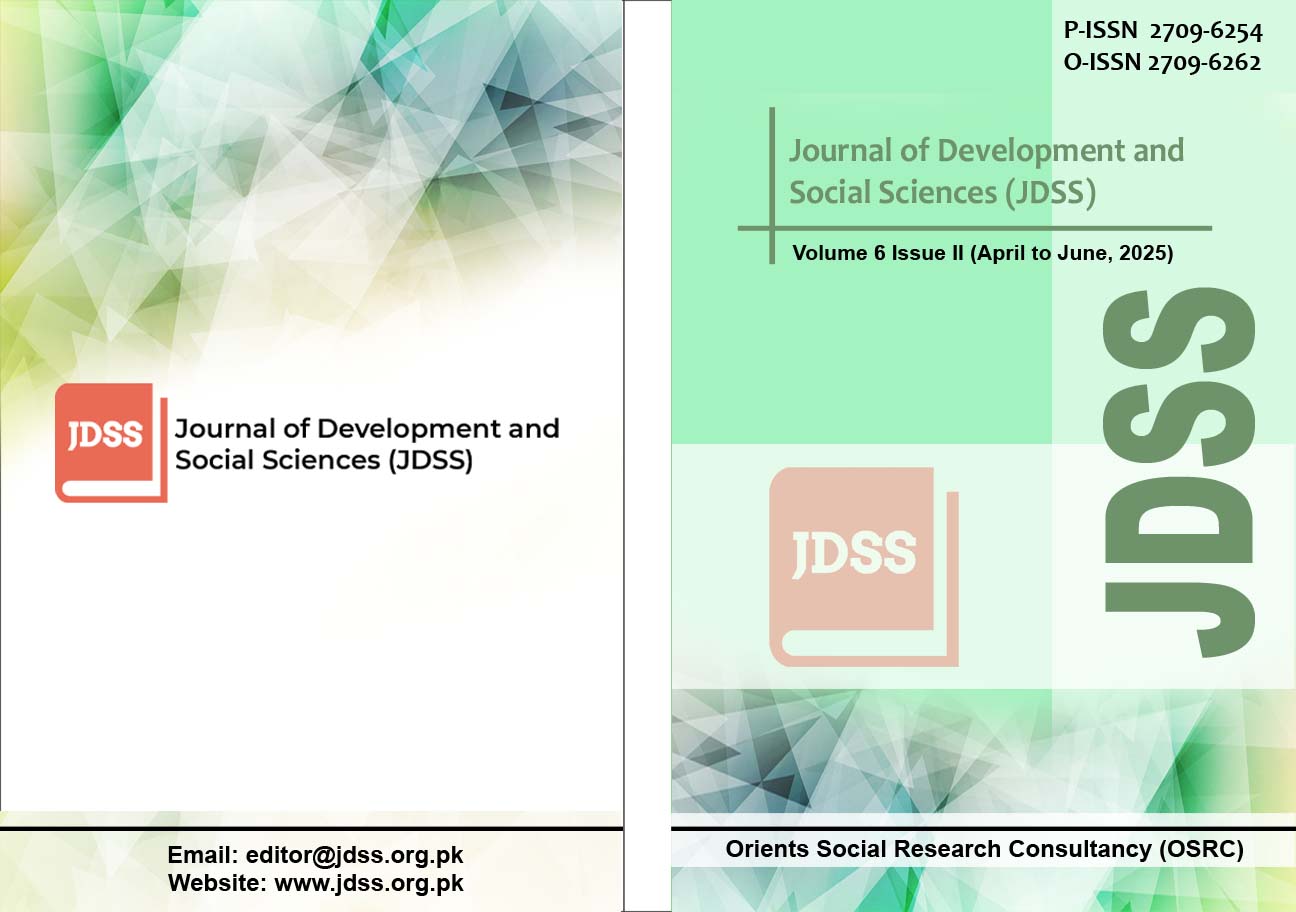A Pragmatic Deconstruction of the Theoretical Myths Pertaining to Nationhood and National Integration
DOI:
https://doi.org/10.47205/jdss.2025(6-II)46Keywords:
Theoretical Dimensions of Nation, Nationalism, National IntegrationAbstract
The phenomenon of turning a large number of people into compact nationhood has been the focus of attention for many social scientists since it requires very fine and delicate architectonic skills on the part of political/ruling elite to accomplish the desired objectives in letter and spirit. The issue becomes more interesting when a deeper insight into the sense of being a nation reveals that no singular factor has solely been the reason of this social bonding but various complex factors like religion, language, race, culture etc. gelled together various segments of the human tribes at various intervals of history. Many of the post-colonial states including Pakistan even dismembered or disintegrate because of the failure of the ruling elite to truly comprehend the sensitivity of the phenonomenon of nationhood and national integration whereas the remaining Pakistan is once again facing the problems of regionalism, subnationalism, ethnic diversity in the form of Baloch, Pahstun, Saraiki, Mohajir and Sindhi identities which situation demands from the decision-makers that the underlying theoretical foundations of nationhood should be carefully revisited and the power-shareing model/instrument currently followed in the state should be redesigned to address the grievances of the marginalized segments of the society. Keeping in view this background, the current study intends to explore the theoretical dimensions of some of the important concepts related to nationhood and nationalism extending to national integration so that a conceptual clarity might be obtained for the policy makers and think tanks in Pakistan and other countries which are facing alike issues and problems and the process of policy formulation and execution in relevant domain can be improved. Accordingly, by applying qualitative method of reasoning, the study examines the ways in which nationalism can both bind and divide societies, and probes the effects of integration policies in multi-ethnic and multicultural states. It finds that although heterogeneity/plurality exists almost everywhere but all rests with the ruling elite of any particular territory to articulate such policies which effectively and meaningfully assimilate various sub-nationalities into a larger national whole.
Downloads
Published
Details
-
Abstract Views: 201
PDF Downloads: 102
How to Cite
Issue
Section
License
Copyright (c) 2025 Journal of Development and Social Sciences

This work is licensed under a Creative Commons Attribution-NonCommercial 4.0 International License.

ORIENTS SOCIAL RESEARCH CONSULTANCY (OSRC) & Journal of Development and Social Sciences (JDSS) adheres to Creative Commons Attribution-Non Commercial 4.0 International License. The authors submitting and publishing in JDSS agree to the copyright policy under creative common license 4.0 (Attribution-Non Commercial 4.0 International license). Under this license, the authors published in JDSS retain the copyright including publishing rights of their scholarly work and agree to let others remix, tweak, and build upon their work non-commercially. All other authors using the content of JDSS are required to cite author(s) and publisher in their work. Therefore, ORIENTS SOCIAL RESEARCH CONSULTANCY (OSRC) & Journal of Development and Social Sciences (JDSS) follow an Open Access Policy for copyright and licensing.







